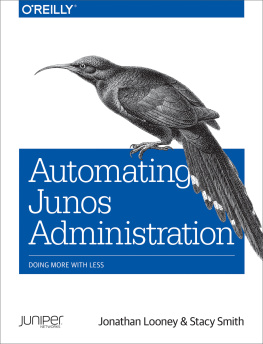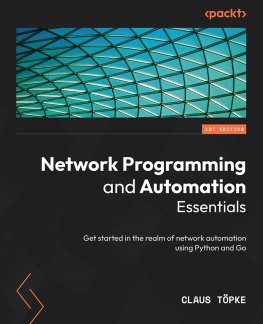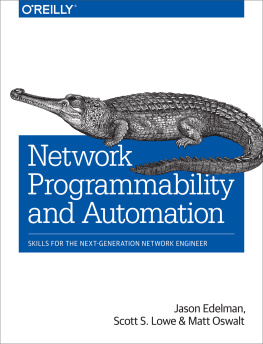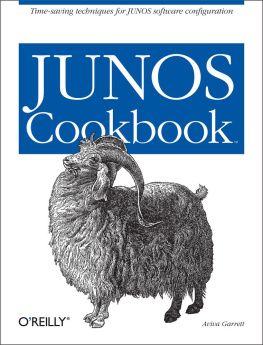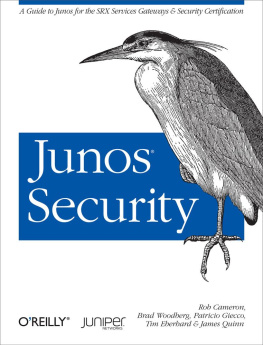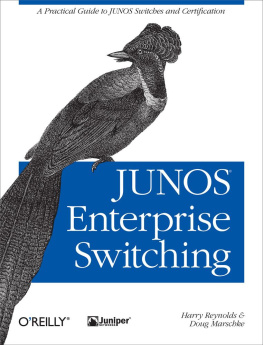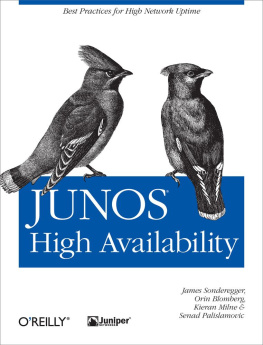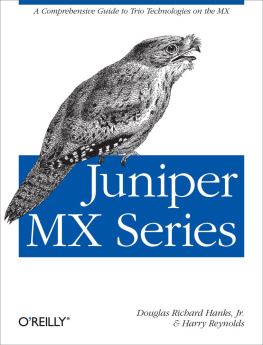Jonathan Looney - Automating Junos Administration: Doing More with Less
Here you can read online Jonathan Looney - Automating Junos Administration: Doing More with Less full text of the book (entire story) in english for free. Download pdf and epub, get meaning, cover and reviews about this ebook. year: 2016, publisher: O’Reilly Media, genre: Computer. Description of the work, (preface) as well as reviews are available. Best literature library LitArk.com created for fans of good reading and offers a wide selection of genres:
Romance novel
Science fiction
Adventure
Detective
Science
History
Home and family
Prose
Art
Politics
Computer
Non-fiction
Religion
Business
Children
Humor
Choose a favorite category and find really read worthwhile books. Enjoy immersion in the world of imagination, feel the emotions of the characters or learn something new for yourself, make an fascinating discovery.
- Book:Automating Junos Administration: Doing More with Less
- Author:
- Publisher:O’Reilly Media
- Genre:
- Year:2016
- Rating:4 / 5
- Favourites:Add to favourites
- Your mark:
Automating Junos Administration: Doing More with Less: summary, description and annotation
We offer to read an annotation, description, summary or preface (depends on what the author of the book "Automating Junos Administration: Doing More with Less" wrote himself). If you haven't found the necessary information about the book — write in the comments, we will try to find it.
How can you grow and maintain a reliable, flexible, and cost-efficient network in the face of ever-increasing demands? With this practical guide, network engineers will learn how to program Juniper network devices to perform day-to-day tasks, using the automation features of the Junos OS.
Junos supports several automation tools that provide powerful solutions to common network automation tasks. Authors Jonathan Looney and Stacy Smith, senior testing engineers at Juniper, will help you determine which tools work best for your particular network requirements. If you have experience with Junos, this book will show you how automation can make a big difference in the operation of your existing network.
- Manage Junos software with remote procedure calls and a RESTful API
- Represent devices as Python objects and manage them with Pythons PyEZ package
- Customize Junos software to detect and block commits that violate your network standards
- Develop custom CLI commands to present information the way you want
- Program Junos software to automatically respond to network events
- Rapidly deploy new Junos devices into your network with ZTP and Netconify tools
- Learn how to use Ansible or Puppet to manage Junos software
Jonathan Looney: author's other books
Who wrote Automating Junos Administration: Doing More with Less? Find out the surname, the name of the author of the book and a list of all author's works by series.

